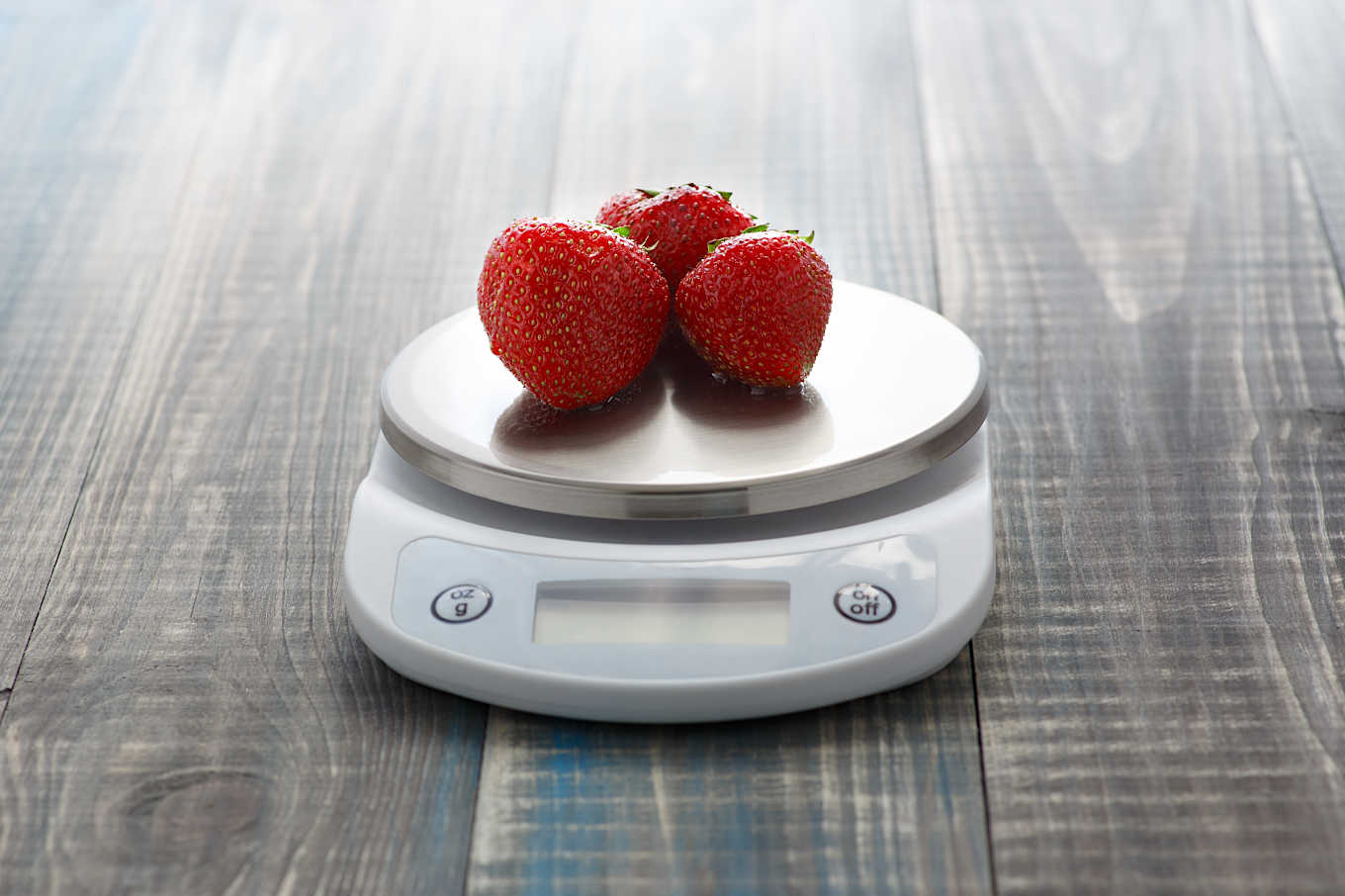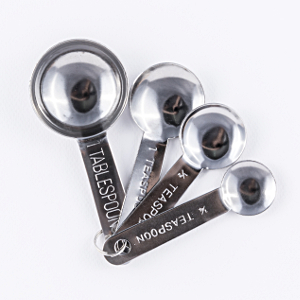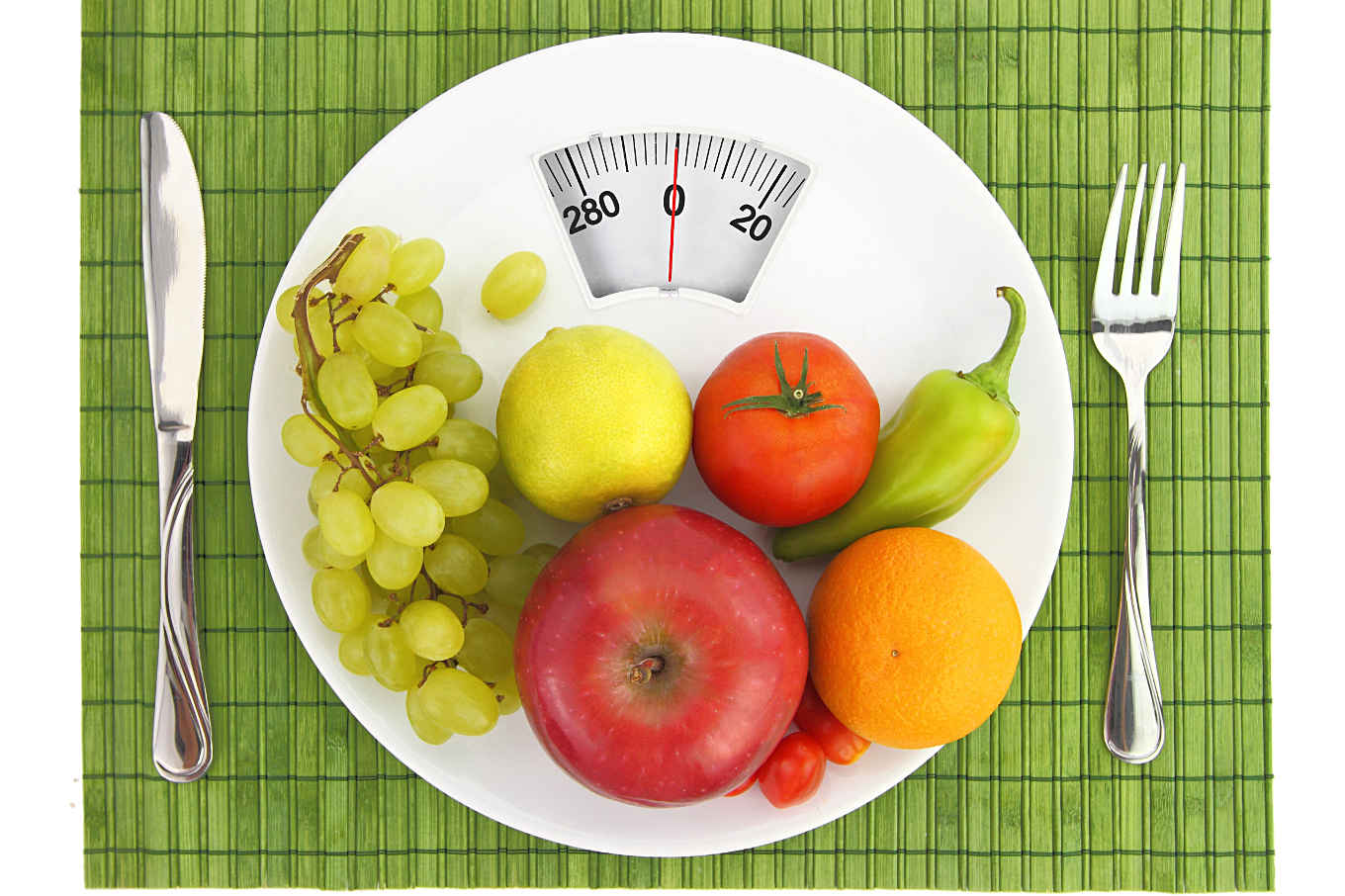Measuring and estimating portion sizes
- 15 Minutes Read
If you are new to logging, or have been at it for awhile, you may have wondered about the best way to measure or calculate portion size. A key aspect of tracking is accurately figuring out how much food and drink you've consumed.
If you don't measure your portions you'll often underestimate how much you are taking in. If you are trying to lose weight this can lead to frustration and lack of progress. Figuring out portions of commonly consumed foods such as bread or crackers where the serving size is listed on the package, is straight forward. However, what about figuring out portions of pasta, meat, peanut butter and oils? This article delves into the details around how to calculate the portion size of foods and drinks with specifics around weighing, measuring and estimating food portions for weight loss.
Weighing is the most accurate way to measure or calculate portion size. You can purchase a kitchen scale at most big box stores or online. We suggest investing in a digital scale as opposed to an old fashioned spring-loaded scale. The digital scales are easier to use and more accurate. With a digital scale, you can easily zero out the weight of the container as well as select different units of measure (e.g. grams, ounces, etc.). Serious about losing weight? Check out MyNetDiary and start weighing your food!

Another approach to calculating portion size is to use measuring cups and spoons or a glass measuring cup to figure out volume (e.g. cups, fl oz, ml, etc). These items can be purchased at big box stores or online.
When measuring a liquid, it is easier, more accurate, and less messy if you use a measuring cup designed for liquids. See below for an example of this type of measuring cup.

When measuring the volume of a solid (e.g. flour, cereal, etc.), you can use standard measuring cups (if measuring weight is not an option). Level off the contents with the flat side of a knife to get an accurate measurement. Use metal or plastic measuring cups, whichever you prefer. Standard measuring cups look like those shown in the photo below.

For measuring very small amounts of liquids or solids, you can use measuring spoons. Level off solids with the flat side of a knife. Use metal or plastic measuring spoons - whichever you prefer. They look like the ones shown in the photo below.

Buy several sets of measuring cups and spoons. That way, you always have one clean and ready for measuring.
If you have already started recording your intake, then you know how difficult it is to estimate portion size. MyNetDiary created a Portion Guide to aid in the process. Look for the open book icon (see example below) when tracking to access the guide.
Tip: Metric system is available for weight, length and volume measurements.


For more help on estimating portion size when you cannot measure, check out the Serving Size Card from the National Heart Lung and Blood Institute. This card displays portion size using familiar objects. Also visit WikiHow's How to Estimate Portion Size for more helpful visual representations of portion size. See below for a quick summary.
| Grain Products |
1 cup cereal flakes = 1 fist
1/2 cup cooked rice, pasta or potato = 1 tennis ball 1 oz slice of bread = 1 cassette tape 1 oz chips = 1 handful |
| Vegetables, and Fruit |
1 cup of salad greens = 1 baseball
1 medium baked potato = 1 computer mouse 1 medium piece fruit = 1 baseball 1/2 cup fresh fruit = 1 tennis ball 1/4 cup raisins = 1 egg |
| Dairy and Cheese |
11/2 oz cheese = 4 stacked dice
1/2 cup ice cream = 1 tennis ball |
| Meat and Protein Alternatives |
3 oz meat, fish, or poultry = 1 deck of cards
3 oz fish fillet = 1 checkbook 2 tablespoons peanut butter = 1 ping pong ball |
| Fats |
1 teaspoon = 1 dice or tip of a finger
1 tablespoon = 1 poker chip |
Tip: We tend to serve ourselves more food when we use larger dishes and less food when we use smaller dishes. If you are trying to lose weight, consider using smaller plates and bowls if you are not able to measure your portion size.
Some foods are so high in calories that an error in portion size means a large error in calories intake. If you are focusing on selecting portions for weight loss this can translate to unexpected calorie intake and potentially impact your weight loss.
Therefore, I strongly recommend that you always measure the following items:
Let's be honest. If you consume foods straight out of the original packaging, then you have no idea how much you have eaten unless you eat the entire package. Portion out what you want, log it, and then enjoy it. You can save hundreds of calories by implementing this simple rule.
Here is a list of foods people tend to overeat unless portioning out ahead of time:
Make up your own list of items and post somewhere near the food - This will help remind you to measure out these items before eating them!
Food labels typically display serving size as consumed, but not always. There are many exceptions that make logging a little bit tricky. Here are some tips that will help you figure out how to calculate portion size.
The measurements provided in the table below might be helpful when logging.
| English | Metric |
|---|---|
| 1 teaspoon = 0.33 tablespoon | 5 ml |
| 3 teaspoons = 1 tablespoon | 15 ml |
| 2 tablespoons = 1 fl oz = 1/8 cup = 0.125 cup | 30 ml |
| 4 tablespoons = 2 fl oz = 1/4 cup = 0.25 cup | 60 ml |
| 6 tablespoons = 3 fl oz = 0.38 cup | 90 ml |
| 8 tablespoons = 4 fl oz = 1/2 cup = 0.5 cup | 120 ml |
| 16 tablespoons = 8 fl oz = 1 cup | 240 ml |
| 16 fl oz = 2 cups = 1 pint = 0.5 quart | 480 ml |
| 32 fl oz = 4 cups = 2 pints = 1 quart | 960 ml (just less than 1 Liter or 1000 ml) |
| 1 oz | 28 grams |
| 3 oz | 85 grams |
| 3.5 oz | 100 grams |
If you need help figuring out how to log a food item, or just have questions about nutrition, weight, or diabetes, post us a question at "Ask a Registered Dietitian" forum in Community. We are available to help you.
Last Updated on Jan 30, 2020
Tracking & MyNetDiary->Tracking Tips